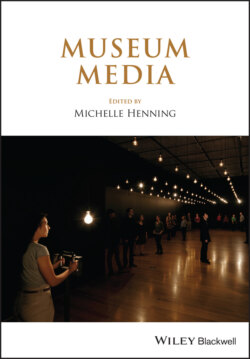Читать книгу Museum Media - Группа авторов - Страница 44
Notes
Оглавление1 1 The work of contemporary media artists and their media archaeological approach can be seen in part as a continuation of the strategies of artists such as Nam June Paik and Wolf Vostell. Their play with, and configurations of, television hardware were in part an effort to defamiliarize the medium and to interrogate and critique commercial television.
2 2 Imperial Imperial War Museum Acquisition and Disposal Policy, March 2011, http://www.iwm.org.uk/sites/default/files/public-document/A%26D_Policy_March_2011.pdf (accessed July 24, 2014). This policy is due for review in March 2016.
3 3 See http://www.iwm.org.uk/exhibitions/iwm-north/big-picture-show (accessed July 22, 2014).
4 4 For example, between the 1880s and the 1940s, architects and designers in the United States worked on and with technologies of display across a series of sites including theaters, department stores, and museums (Leach 1989, quoted in Henning 2006, 304).
5 5 The relationship between vision and movement within the museum and its influence on the development of cinema in the nineteenth century have been well traced. For an excellent overview see Eleftheriotis’s Cinematic Journeys (2010).
6 6 See also Peter Higgins’s concept of “total media” in Chapter 14 in this volume.
7 7 With reference to the work of Hsu Huang (2001), Hillier and Tzortzi emphasize “two key themes embodied in the spatial layout of the modern museum: organized walking and the congregation of visitors. The former is realized by the organization of spaces into visitable sequences so as to map knowledge, and the latter is manifested by the creation of gathering spaces, the integration core, where the congregation takes place” (2006, 292).
8 8 Claire, “Roll Up and Roll Out: The Final Push for SI,” Imperial War Museums Social Interpretation Blog. Accessed July 22, 2014. http://blogs.iwm.org.uk/social-interpretation/category/qr-codes/.
9 9 Claire, “Roll Up and Roll Out” (see n. 8).
10 10 Assmann (2008, 98) sees the “canon” as an “active” mode of cultural memory in the museum in terms of that which is on show and visible to visitors, whereas the “archive” is a “passively stored memory” comprising objects stored and out of sight.
